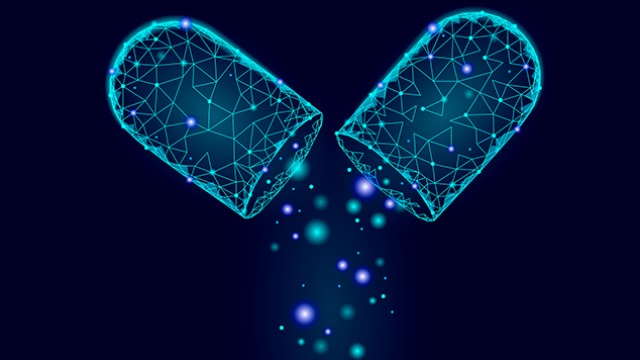A team of researchers at the Federal University of São Paulo (UNIFESP) in Brazil has developed a novel biomaterial that can deliver medication directly to the gastrointestinal tract of fish. This innovative solution addresses two key issues in fish treatment – resistance to conventional antibiotics and the waste and pollution associated with medication administration. The research, which was published in the journal Biomaterials Advances, demonstrates the potential of this biomaterial as a drug carrier for fish.
The bioparticle, based on chitosan and alginate, is administered orally in powder form, making it highly palatable to fish. Chitosan is derived from crustacean shells, while alginate is derived from seaweed. The formulation also includes arginine, an amino acid found in protein-rich foods. The researchers used a peptide from an arachnid found in Brazil’s Southeast region as the antimicrobial molecule.
The effectiveness of this drug delivery system was tested on Schwartz’s catfish, an ornamental fish species native to the Amazon and other parts of South America. The fish were treated with the biomaterial for eight days, and analysis showed that the bioparticle effectively penetrated the intestinal tissue, reaching both the epithelial cells and deeper layers of the organ. Importantly, histological and hematological tests demonstrated no cytotoxic effects or other damage due to the biomaterial.
One of the main advantages of this biomaterial is its ability to adhere to mucous membranes, promoting efficient drug delivery. Additionally, the material can withstand the acidity of the digestive tract and reach the intestine intact. This research builds on two projects spearheaded by UNIFESP, which focused on enhancing the properties of chitosan and developing drug carriers.
In a previous study, the researchers examined the efficacy of a similar formulation against parasites that commonly infect ornamental fish species, such as Schwartz’s catfish. The bioparticle successfully delivered an anthelmintic drug, demonstrating its potential as a drug carrier for a wide range of fish species. The exportation of ornamental fish can introduce parasites to new ecosystems, posing risks to both wild and farmed fish populations.
The researchers plan to further evaluate the efficacy of this biomaterial in treating parasites in commercially farmed fish species, including Nile tilapia and Tambaqui. Disease in freshwater fish farming in Brazil alone is responsible for an estimated annual loss of USD 84 million. By developing an effective drug delivery system, this research has the potential to significantly improve the sustainability and productivity of fish farming practices.
Crucially, the biomaterial developed in this study is non-toxic to fish, making it safe for human consumption. The researchers are optimistic about the prospects of implementing this drug delivery system in the fish farming industry, as it offers a sustainable solution to medication administration while minimizing environmental impact. A patent application has been filed for one of the formulations, highlighting the potential for commercialization.
In conclusion, the development of this novel bioparticle as a drug carrier for fish demonstrates its potential to overcome antibiotic resistance and reduce waste and pollution in the fish farming industry. With further research and testing, this drug delivery system could revolutionize the treatment of fish diseases and contribute to the sustainable growth of aquaculture.
*Note:
1. Source: Coherent Market Insights, Public sources, Desk research
2. We have leveraged AI tools to mine information and compile it



